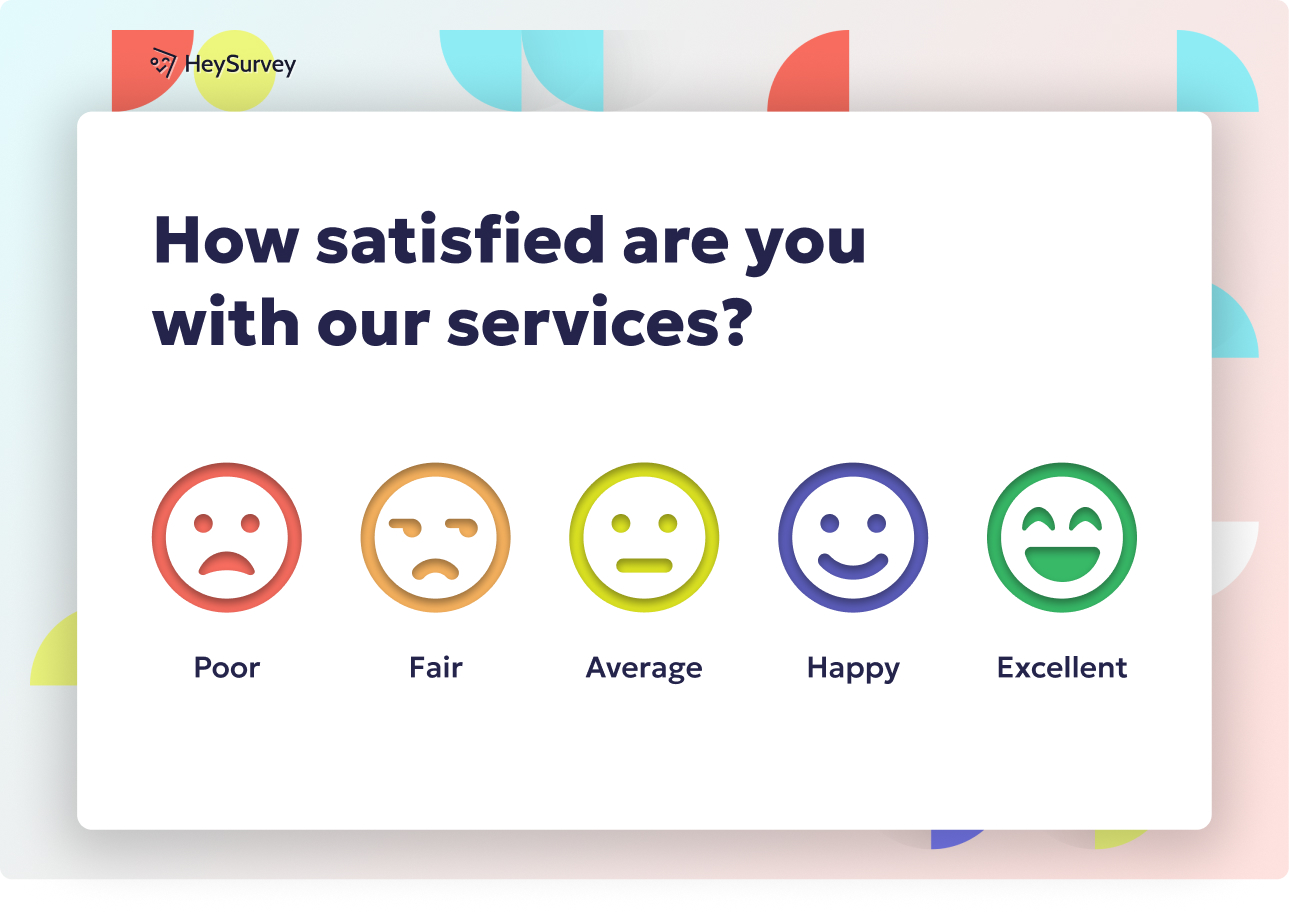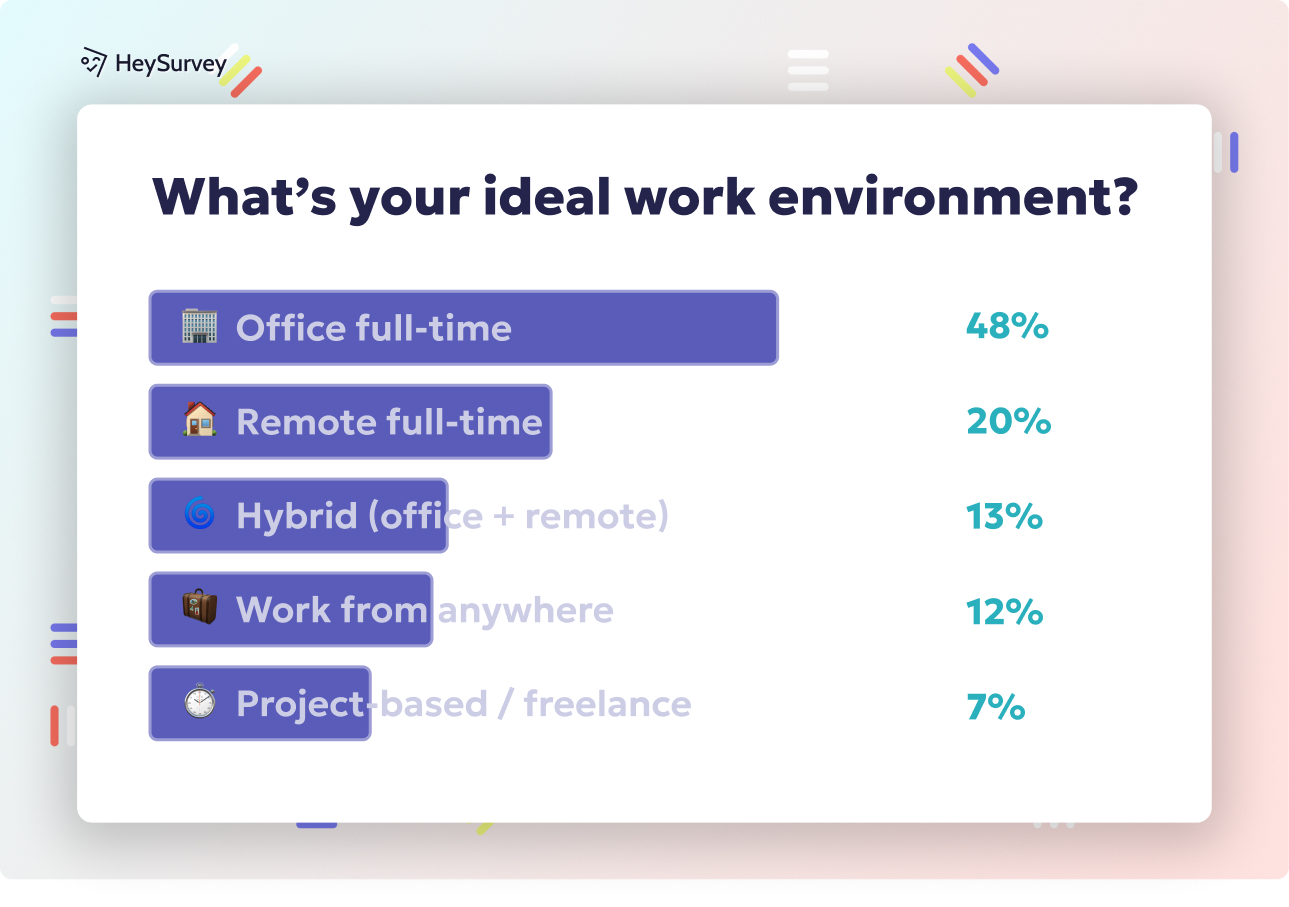31 Town Hall Survey Questions for Engaged Feedback & Insights
Discover 30+ effective town hall survey questions with sample prompts to boost engagement, transparency, and meaningful employee feedback.
Town hall meetings—those big, all-hands conversations that bring everyone around the (usually virtual) table—can feel like either a quick company broadcast or a truly interactive forum. The difference? Strategically timed employee town hall feedback surveys. By folding purposeful survey questions into the rhythm of your communications, you turn monologue into dialogue, collect invaluable insights, and nudge your organization’s decisions forward with employee-powered input. From pre-event anticipation pulses to live leadership Q&A polling and reflective culture checks, a well-crafted survey turns every town hall into a two-way feedback engine. Ahead, you’ll find a toolkit for creating high-impact internal communications surveys that make your next town hall the most engaging one yet.
Pre-Event Expectation Survey
Why & When to Use
The week or two before a town hall? That’s your sweet spot for a pre-town-hall pulse check. This is when anticipation is building, but the agenda isn’t set in stone yet. By reaching out with an expectation survey, you get direct access to the burning questions, desired topics, and logistical barriers swirling through employees’ minds.
This early involvement does more than fill a virtual suggestion box; it signals that you truly want participation. It also helps leadership address real concerns, not just what they assume is important. Pre-event expectation surveys keep the upcoming meeting focused and relevant, which means attendance climbs and engagement soars.
Use this feedback to:
- Identify hot topics that keep staff buzzing in Slack or Teams.
- Uncover confusion or misalignment on the meeting’s purpose.
- Design sessions that address practical needs—like hybrid tech, time zones, or accessibility.
- Recognize potential attendance hurdles, like clashing deadlines or childcare.
- Crowdsource the most urgent challenges, making it clear you’re listening in real time.
5 Sample Questions
Which company initiatives would you most like leadership to address at the upcoming town hall?
How clear are you on the meeting’s objectives?
What format (Q&A, panel, demo) will help you engage best?
What concerns or challenges do you hope are discussed?
Do you foresee any barriers to attending the live session?
A solid pre-event survey not only refines your town hall, it makes employees feel seen before the mic even goes live. Nobody wants a meeting that could have been an email—asking up front ensures yours never will be.
Pre-event surveys enable organizers to tailor content and logistics to attendees' preferences, enhancing engagement and satisfaction. (blog.10times.com)
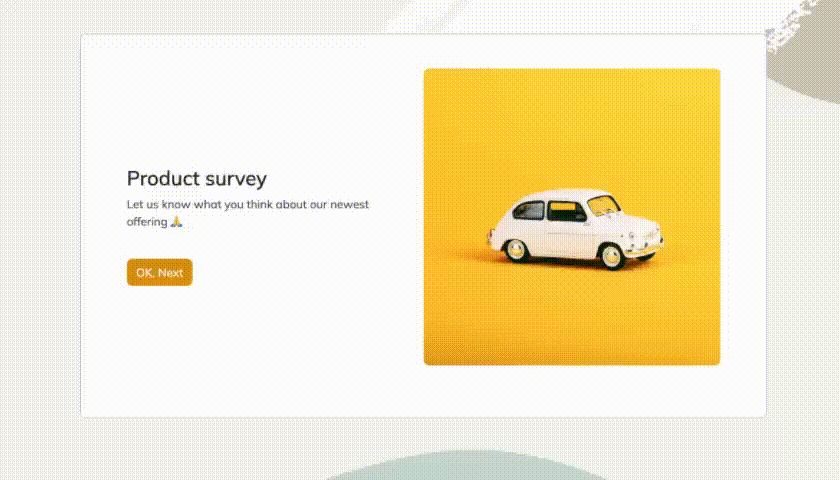
Creating a town hall survey with HeySurvey is a breeze, even if you’re new to the platform! Here’s a simple three-step guide to get you started, plus some bonus tips to polish your survey before you hit publish.
Step 1: Create a New Survey
- Head to HeySurvey and either start with a blank survey or choose a pre-built template that fits your town hall survey needs.
- Give your survey a clear internal name so you can easily identify it later in your dashboard.
- Now you’re in the Survey Editor, ready to build your feedback instrument tailored perfectly for your employees.
Step 2: Add Questions
- Click the Add Question button at the top or between existing questions.
- Pick the question type that fits best: single or multiple choice, scales for ratings, open text responses, or something else from the variety HeySurvey offers.
- Type your question text, add any descriptions or instructions, and mark questions as required when necessary to ensure you get essential feedback.
- Feel free to add images or media if it helps clarify or spice up your questions.
- Don’t forget, you can duplicate questions to speed things up, or add branching logic to customize the survey flow based on answers.
Step 3: Publish Your Survey
- Once you’re happy with your questions and layout, click Preview to see the survey as your respondents will.
- Tweak colors, fonts, and logos using the Designer Sidebar to make the survey pop with your branding.
- Hit the Publish button to generate your survey link. Remember, accounts are required to publish and view results.
- Share the link with your team through email, intranet, or embed it directly into your internal communications.
Bonus Step: Apply Branding and Define Settings
- Upload your company logo to reinforce your brand identity at the top of the survey.
- Set start and end dates to control when your survey is live.
- Limit responses if you want to cap participation.
- Add a custom redirect URL to guide employees after completion.
- Enable response viewing if you want participants to see results instantly.
Bonus Step: Skip Into Branches for a Personalized Experience
- Make your survey smarter by adding branching logic. Based on a respondent’s answer, you can direct them to different follow-up questions.
- This is especially helpful in town hall surveys to dive deeper into specific topics or skip irrelevant sections.
- Multiple endings can be set up, each with unique messages or images to leave a customized final impression.
With these easy steps and bonus features, you’ll have a polished, engaging employee town hall feedback survey ready to go in no time. When you’re ready, click the button below to launch your tailored survey template and start gathering those invaluable insights!
Live Polling During Town Hall
Why & When to Use
Say goodbye to glazed-over video-call faces. Live polling questions for town halls boost participation by inviting everyone—yes, even the silent Zoom squares—to weigh in. Real-time polls during a meeting capture authentic sentiment, prompt clarifications, and energize the room.
This approach isn’t just for show. Instant feedback helps presenters adjust on the fly. Is the strategy slide a smash hit, or a snooze? Did a complicated product update leave half the crowd scratching their heads? Now you’ll know. Use embedded polls to:
- Gauge message clarity so nothing gets lost in translation.
- Highlight which updates are winning hearts and minds.
- Monitor Q&A satisfaction and encourage bolder questions.
- Check emotional temperature when tough topics arise.
- Decide—crowdsource style—whether to dig in deeper or keep things moving.
5 Sample Questions
On a scale of 1–5, how clear is the strategy just presented?
Which department update resonated most?
What word best describes your reaction to the product roadmap (e.g., excited, unsure, confused)?
Do you feel your questions are being answered adequately so far?
Should we dive deeper into this topic now or move on?
Embedding polls in your webcast or slide deck turns passive listeners into active co-pilots—making your town hall a conversation, not a lecture. Nobody regrets an extra reason to click a button, right?
Live polling during town hall meetings significantly enhances participant engagement and provides immediate feedback, fostering a more interactive and responsive environment. (events.studio)
Post-Event Feedback Survey
Why & When to Use
The town hall is over, but your quest for improvement has just begun. A post-event feedback survey, fired off within 24 hours, captures fresh impressions while the meeting is still top-of-mind. This immediate feedback helps you measure effectiveness, spot opportunities for the next event, and benchmark progression over time.
Quick, post-huddle reflection lets employees weigh in while their opinions are sharp. You’ll find out which agenda items hit home, which missed the mark, and what would have nudged engagement a little higher next time. To get the best actionable takeaways:
- Measure overall meeting satisfaction and match it to your goals.
- Ask if the session delivered on what was promised before the event.
- Identify specific segments or speakers that made a difference.
- Gather “what worked, what didn’t”—straight from the source.
- Assess whether employees are likely to come back for more.
5 Sample Questions
How satisfied were you with the overall town hall experience?
Did the session meet the expectations set beforehand?
Which segment provided the most actionable information?
What could we have done differently to improve engagement?
How likely are you to recommend attending future town halls?
A Net Promoter-style scoring system tucked into your feedback survey can reveal your true fans—and give you concrete numbers for next time. Fresh feedback is the breakfast of champions, especially when it means your next town hall will be even better.
Leadership Transparency & Communication Survey
Why & When to Use
It’s the question on countless employees’ minds: How transparent are our leaders, really? Running a quarterly “executive transparency survey” helps answer it, collecting reactions to repeated town halls over time. When used consistently, this survey gives you a read on whether trust in leadership is growing—or wilting.
You shouldn’t have to guess how well your executives connect strategic dots or address tough, awkward questions. This survey drills directly into:
- Perceptions of honesty and candor in executive communication.
- The extent to which leadership faces challenging questions directly.
- Trust in information being shared—PR spin or the real story?
- Whether leaders bridge the gap between high-level goals and daily work.
- Additional insights that would foster deeper trust next time.
5 Sample Questions
How transparent do you feel leadership was during the latest town hall?
Were tough questions addressed directly?
Do you trust the information shared by executives?
How well did leaders connect strategic goals to your daily work?
What additional information would foster greater trust?
Leadership communication feedback surveys bring candor to the fore. Employees get to voice not just what was said, but how it was received. When replies show a leap in trust and understanding, you know your town hall efforts are on the right track.
Regular town hall meetings enhance leadership transparency and accountability, fostering trust and engagement among employees. (shrm.org)
Organizational Culture & Engagement Pulse
Why & When to Use
Company culture isn’t built in flashy presentations or snappy slogans—it’s the collective energy that lingers long after the virtual room empties. Pulse surveys aligned with town halls (think semi-annually) are a great way to measure whether your culture feels vibrant or flat, inclusive or isolating.
These pulse checks use the town hall as a reflection point: did the meeting strengthen morale, reinforce shared values, and foster a sense of belonging? You’ll find these quick surveys beneficial for:
- Tracking shifts in motivation and alignment with company vision.
- Assessing whether all voices felt heard and respected.
- Spotting inclusivity gaps in both content and delivery.
- Identifying unique aspects of culture that shine (or need more TLC).
- Revealing friction or disconnection points well before they spark bigger issues.
5 Sample Questions
After the town hall, how motivated do you feel about our company vision?
Do you feel your voice was heard?
How inclusive was the content and delivery?
What aspect of our culture shone through most strongly?
Where does our culture need strengthening?
Well-timed employee engagement surveys after town halls ensure culture isn’t just a buzzword—it’s an experience. Plus, they give leadership a roadmap to improvement that goes beyond empty platitudes.
Topic Prioritization & Agenda-Setting Survey
Why & When to Use
The best town halls are laser-focused on what matters most to employees. But how do you figure that out? Mid-cycle agenda-setting surveys let you crowdsource and prioritize pressing topics before the next event rolls around.
There’s no better way to ensure the next town hall covers hot-button issues (not just what the C-suite thinks is important) than directly asking staff to rank potential agenda items. Use this survey to:
- Tap into emerging pain points that weren’t on the last radar.
- See which strategic topics are most top-of-mind across the business.
- Uncover which metrics or company data need more visibility.
- Suggest potential guest experts or voices for variety.
- Decide exactly how much time to allocate to that always-overflowing Q&A.
5 Sample Questions
Rank these potential agenda topics in order of importance.
What new initiatives need airtime in the next town hall?
Which metrics do you want deeper insight into?
What guest speakers would you value hearing from?
How long should Q&A be allocated?
A quick town hall agenda survey builds an actual crowd-sourced agenda (rather than just a top-down wish list). Employees see their fingerprints all over the meeting—and are way more likely to show up and speak up.
Demographic & Segmentation Questions for Deeper Insights
Why & When to Use
To truly understand your survey results, you need to know who is replying—without ever making anyone feel exposed or spotlighted. Asking selective demographic or segmentation questions helps you slice town hall feedback, spotting trends by department, tenure, or location, while protecting anonymity.
This is not about snooping, but about finding out if certain groups are thriving—or quietly disengaged. With a mindful approach, you can:
- Compare feedback across offices (HQ vs. remote, regional differences).
- Tailor follow-up actions to specific teams or segments who most need support.
- Surface if newer employees need onboarding Q&A or if seasoned staff want strategic updates.
- Determine which roles are most likely to attend (or skip) the live sessions.
- Track time-zone access to fine-tune future scheduling.
5 Sample Questions
Which department do you primarily identify with?
How long have you been with the organization?
What is your primary work location/time zone?
What level best describes your role (individual contributor, manager, exec)?
Do you attend town halls live or via recording?
Protecting data privacy is non-negotiable. Include a reassuring note about anonymity, only ask for need-to-know details, and steer well clear of personally identifiable information unless truly required. Ethical survey practices encourage honest responses—and boost trust in the whole process.
Dos and Don’ts: Best Practices for Crafting Town Hall Survey Questions
There’s an art to writing surveys that entice thoughtful, complete answers rather than causing eye rolls or instant exits. Stick to these best practices for town hall surveys to maximize your feedback and avoid common slip-ups.
Do:
- Keep your survey short—under ten questions is ideal—to boost completion rates.
- Mix it up with both quantitative scales (so you’ve got numbers) and open-ended prompts (for depth and color).
- Share outcomes! Always circle back with summary results and next steps, so employees know their input is shaping real action.
Don’t:
- Avoid leading questions that nudge employees toward a “right” answer.
- Never combine two questions into one (“How clear and exciting was this update?”).
- Do not ask for identifying data unless it’s absolutely necessary—anonymity brings honesty.
By following these ground rules, you’ll maximize both quality and quantity of responses. Keep things crisp, relevant, and respectful, and you’ll see your survey scores—and meeting impact—climb.
Town hall surveys aren’t just data-collection tools—they’re engines for engagement, trust, and continuous improvement. Use these feedback instruments to spark better conversations, fine-tune your forum, and build a workplace where every voice counts. The next time you schedule a town hall, don’t just plan the slides—plan the questions that make your meeting matter.
Related Employee Survey Surveys
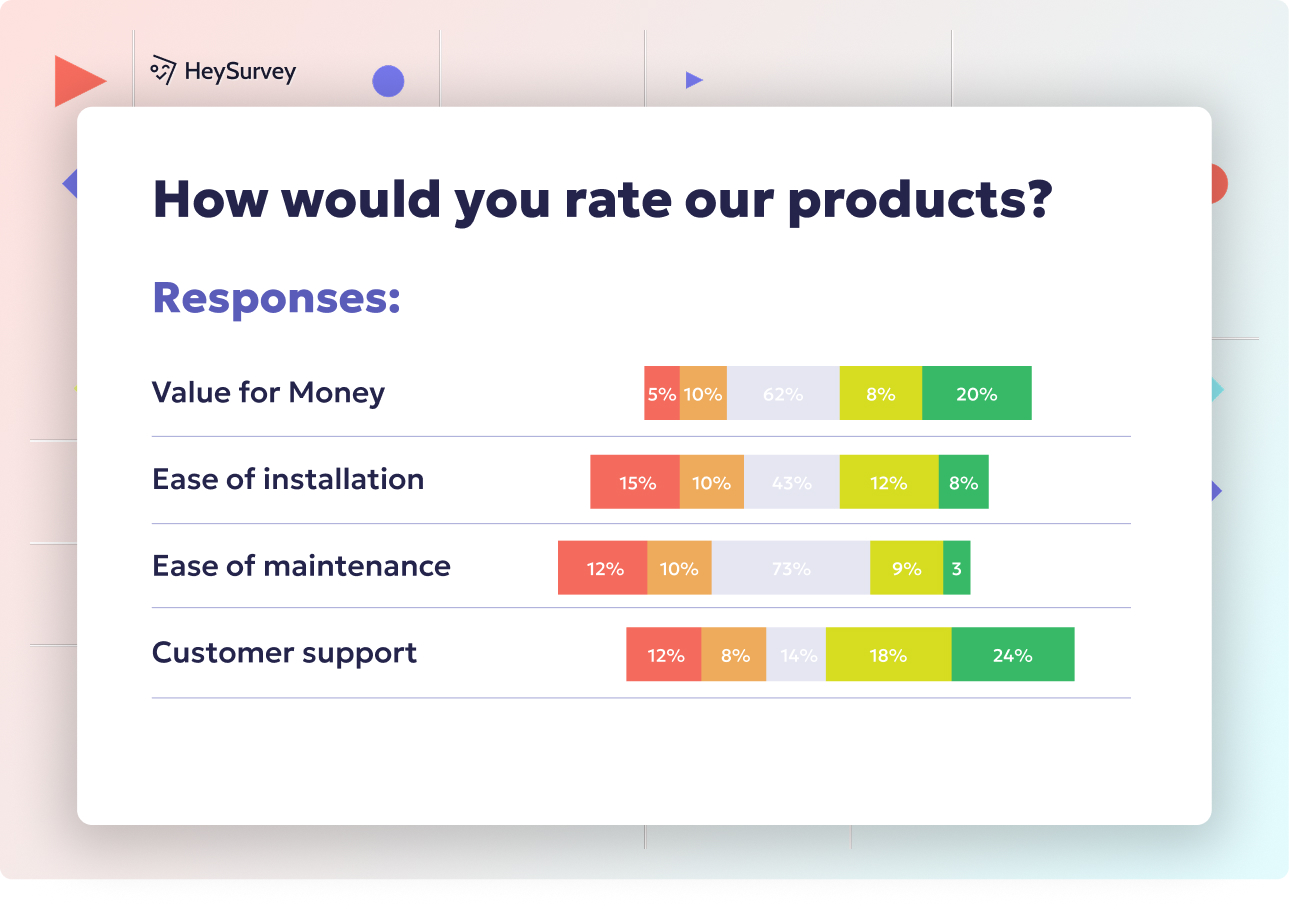
29 Essential Post Mortem Survey Questions for Project Success
Discover 25+ essential post mortem survey questions to improve projects, boost team morale, and d...
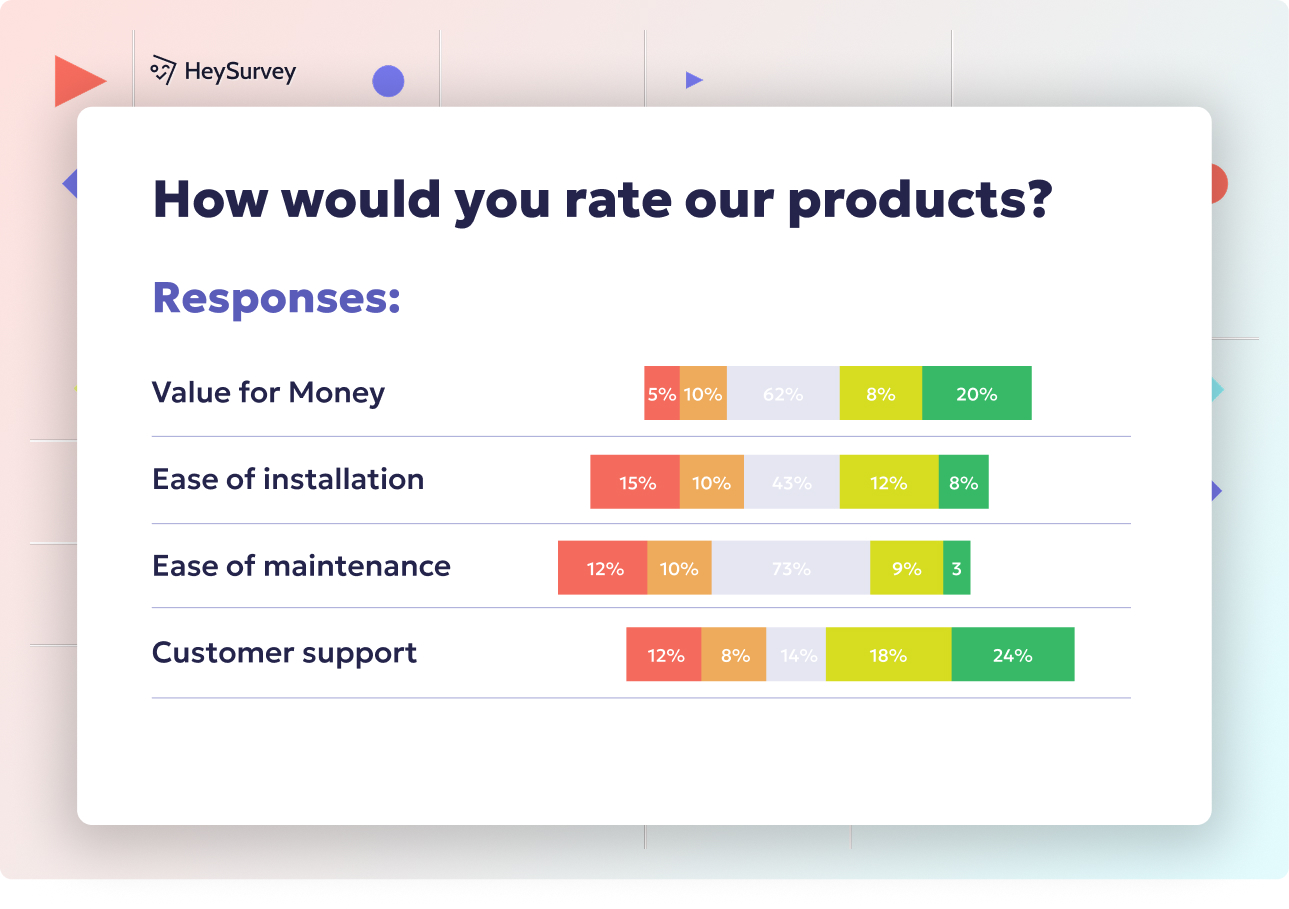
31 Change Readiness Survey Questions to Boost Your Success
Discover 25+ sample change readiness survey questions to assess attitudes, barriers, and confiden...
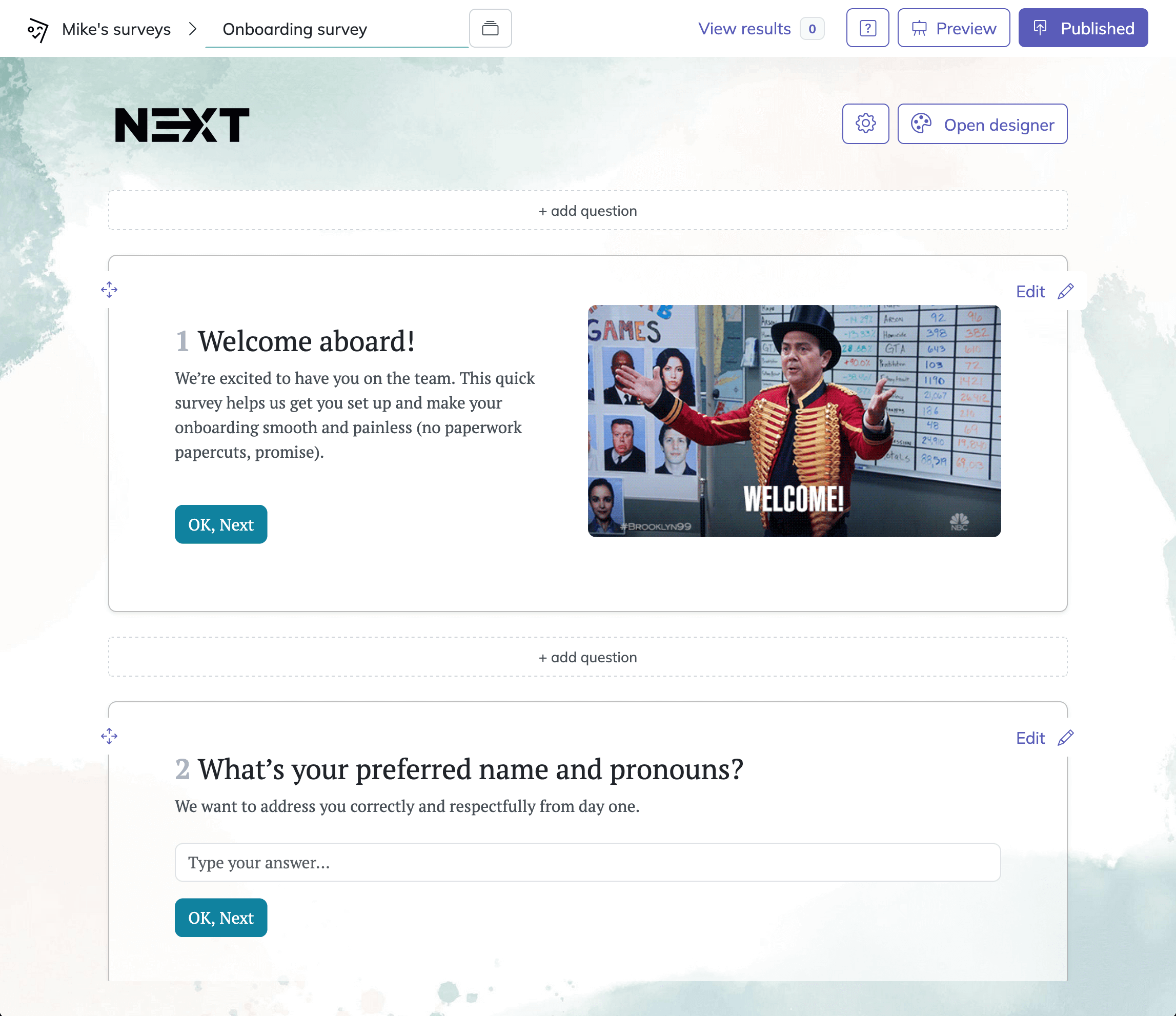
31 Retreat Survey Questions to Collect Actionable Feedback
Discover 26 essential retreat survey questions to gather actionable feedback before, during, and ...
